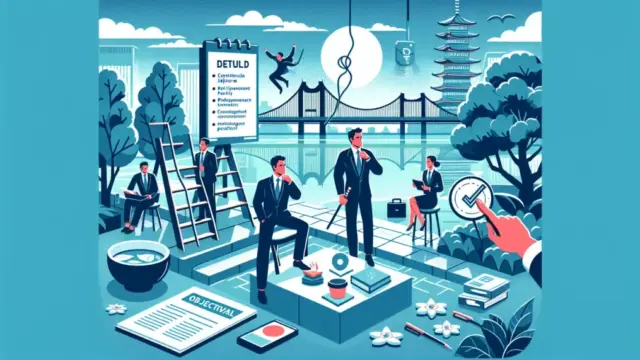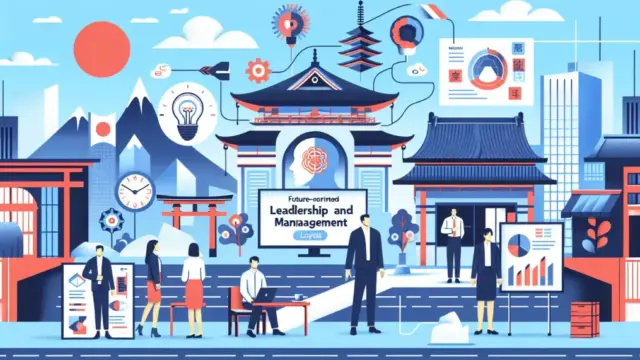How will the future of communication and leadership shape our growth? As technology evolves, so too do our communication styles and approaches to leadership. In the coming era, building effective relationships and practicing self-leadership will be essential for success. This blog delves into the future of communication and leadership, offering insights that can aid your personal development.
By understanding the evolution of communication and the new forms of leadership, we can cultivate better relationships and enhance our influence. It’s crucial to learn specific skills and trends to navigate this transformation effectively. Throughout this article, you’ll discover valuable tips for self-growth as you look towards the future.
- The Future of Communication Shaped by Technology
- New Forms of Leadership Driven by Diversity and Inclusion
- The Importance of Emotional Intelligence and Active Listening
The Future of Communication
The landscape of communication is rapidly evolving, thanks to advancements in technology. Our methods of connecting with each other in both personal and professional realms are becoming more diverse, and traditional norms are no longer sufficient. This is especially true in the realm of leadership, where effective communication is vital for success. In this section, we’ll explore how technology is transforming our communication styles and the evolution of online interactions.
How Technology is Transforming Communication
The evolution of technology has dramatically altered our communication styles. In the past, face-to-face interactions were the norm, but now we have a variety of options, including emails, chats, and video calls. This shift allows us to convey information quickly and without the constraints of time or location. Moreover, in leadership roles, utilizing digital tools can facilitate smoother communication with team members.
However, the rapid pace of technological change comes with its own set of challenges. While these advancements offer convenience, they also pose a risk to the quality of communication. When we can’t read someone’s facial expressions or tone of voice, misunderstandings can easily arise. Therefore, leaders must not only learn to effectively navigate new communication tools but also prioritize building trust with their teams.
- Diverse communication methods driven by technological advancements
- Enhancing leadership through the use of digital tools
- Important considerations for maintaining communication quality
The Evolution of Online Communication
Online communication has seen rapid growth, particularly with the rise of remote work. Various platforms, such as video conferencing and chat tools, have emerged to strengthen collaboration among team members. This development enables real-time communication that transcends physical distances.
However, online environments also present unique challenges that differ from face-to-face interactions. Non-verbal cues can be harder to convey, making misunderstandings more likely. As a result, leaders need to make a conscious effort to clearly express their emotions and intentions. Additionally, fostering connections among team members is crucial, which can be supported by establishing regular online engagement opportunities.
- The significance of online communication in the era of remote work
- Effective use of video conferencing and chat tools
- Strategies for non-verbal communication awareness
A New Approach to Leadership
In today’s world, leadership needs to adapt to the rapidly changing social and business landscapes. With the increasing emphasis on diversity and inclusion, it’s essential to create environments where individuals from various backgrounds can thrive. Additionally, the rise of remote work has brought about the necessity for leadership skills that transcend physical distances. In this section, we’ll explore the new forms of modern leadership, focusing on how to leverage diversity and addressing the challenges of leading in a remote setting.
The Importance of Diversity and Inclusion
Diversity and inclusion are vital components for fostering growth and innovation within organizations. When people with different perspectives and ideas come together, it becomes easier to generate creative solutions. Leaders must embrace a diverse workforce and cultivate an environment where everyone feels comfortable expressing their opinions. This approach not only strengthens team cohesion but also enhances overall organizational performance.
Moreover, inclusion is key to ensuring that employees feel recognized and valued. When leaders intentionally build an inclusive culture, it boosts team motivation and can significantly reduce turnover rates. Thus, diversity and inclusion are increasingly being recognized as essential elements of a modern leadership approach.
- The Innovative Potential of Diversity
- How Inclusion Strengthens Team Cohesion
- The Importance of Diversity in Leadership
Challenges and Solutions in Remote Leadership
Remote leadership requires managing teams across physical distances, which comes with its own set of challenges. Issues such as communication breakdowns and weakened connections among team members are common. In a remote environment, traditional face-to-face interactions are not possible, necessitating intentional efforts to enhance communication.
For effective remote leadership, regular one-on-one meetings and team-wide online engagements can be very beneficial. Utilizing task management tools and chat applications to encourage transparent information sharing is also crucial. Leaders need to create an environment where team members feel comfortable reaching out for support, as building trust is key to successful remote leadership.
- Unique Communication Challenges in Remote Settings
- The Importance of Regular Meetings
- Strategies for Building Team Trust
Essential Communication Skills for the Future
As we look toward the future of leadership, effective communication skills are becoming increasingly vital. In particular, emotional intelligence and active listening are indispensable abilities for leaders aiming to build strong relationships with their team members. By honing these skills, leaders can better understand their team’s needs and engage in deeper, more meaningful conversations. This chapter delves into the significance of emotional intelligence and the techniques of active listening.
The Importance of Emotional Intelligence
Emotional intelligence refers to the ability to recognize, understand, and appropriately respond to one’s own emotions and those of others. When leaders possess emotional intelligence, they develop a deeper understanding of their team members’ feelings, leading to more effective communication. This is especially crucial in high-stress situations or during conflicts, where emotional intelligence can greatly influence the quality of leadership.
By enhancing their emotional intelligence, leaders can foster trust with their team members, ultimately contributing to improved overall team performance. Additionally, leaders with high emotional intelligence are more open to feedback, paving the way for personal growth. This continuous growth enables leaders to evolve alongside their teams.
- Enhancing leadership through emotional intelligence
- Building trust with team members
- Establishing a path for personal growth
Techniques of Active Listening
Active listening goes beyond merely hearing what someone says; it involves understanding and empathizing with the speaker. When leaders practice active listening, team members feel that their opinions and emotions are valued, which encourages more open communication. This, in turn, facilitates smoother problem-solving within the team.
Active listening techniques include paraphrasing what the speaker has said to confirm understanding and asking clarifying questions. These approaches allow leaders to accurately grasp their team members’ thoughts and feelings, leading to appropriate responses. This skill is crucial in leadership, as it significantly strengthens team cohesion.
- Improving communication quality through active listening
- Valuing team members’ opinions
- Facilitating smoother problem-solving within the team
Leadership Trends and Their Impact
Modern leadership is encountering new trends with the advent of the digital age. As technology evolves, leaders are shifting from mere managers to roles that support and guide their team members. By effectively utilizing digital tools, leaders can enhance communication and boost team productivity. Furthermore, the importance of ethical leadership is on the rise, requiring leaders to consider how their actions impact their teams and the organization as a whole. This chapter delves into the role of leaders in the digital age and the significance of ethical leadership.
The Role of Leaders in the Digital Age
In the digital era, leaders are expected to transcend traditional roles and leverage technology to guide their teams effectively. With the rise of remote work, it’s essential for leaders to maintain smooth communication with team members while providing support towards achieving goals. By utilizing digital tools, they can monitor team progress in real time and respond quickly when issues arise.
Moreover, leaders need to focus on team building in a digital environment. By fostering online interactions and providing feedback, they can cultivate trust among team members, which ultimately enhances overall performance. Mastering technology has become a vital skill for leaders today.
- Managing team progress with digital tools
- The importance of communication in a remote environment
- Building trust through online interactions
The Importance of Ethical Leadership
Ethical leadership significantly influences an organization’s culture and credibility. When leaders demonstrate ethical behavior, team members can work with confidence, leading to an overall boost in morale within the organization. In the digital age, where transparency and fairness are increasingly demanded, ethical decision-making is becoming more critical.
Additionally, ethical leadership impacts an organization’s brand image. Leaders who fulfill their social responsibilities are more likely to gain the trust of customers and stakeholders, which can ultimately lead to improved performance. By prioritizing ethical behavior, leaders can achieve sustainable growth.
- How ethical behavior enhances organizational morale
- The demand for transparency in the digital age
- The impact of ethical leadership on brand image
Conclusion
In this article, we explored the significance of future communication and leadership. As technology evolves, leaders are called to adopt new communication styles that prioritize diversity and inclusion. We also discovered that skills such as emotional intelligence and active listening are crucial for fostering team cohesion.
Moreover, leaders in the digital age can enhance their organization’s credibility by emphasizing ethical decision-making, paving the way for sustainable growth. By putting these elements into practice, you can elevate your own leadership skills and contribute to the success of your team and organization.
- The importance of effective communication through technology
- The necessity of leadership that embraces diversity and inclusion
- How ethical leadership can enhance organizational credibility
As you reflect on the future of leadership, consider using the insights shared in this article. We look forward to hearing your thoughts and feedback in the comments section!





















































Comment